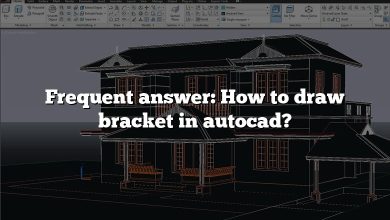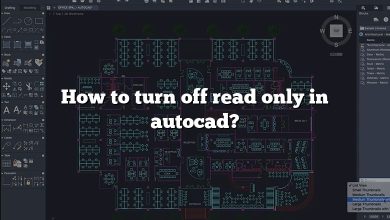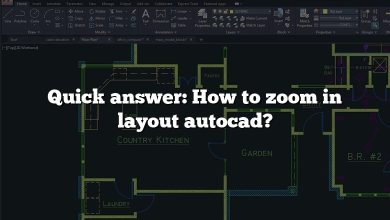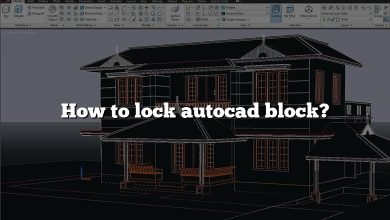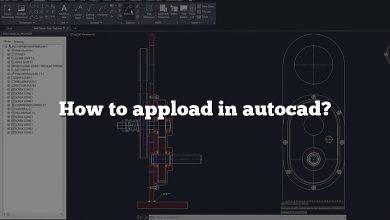In the world of AutoCAD programming, understanding how to convert data types with AutoLISP is crucial for efficient and accurate data manipulation. Whether you need to convert between numeric values, strings, or lists, AutoLISP provides a range of powerful functions to simplify the process. This article will guide you through the process of converting data types with AutoLISP in AutoCAD, equipping you with the knowledge and techniques to handle various data types seamlessly.
By exploring the conversion of numeric data types, such as integers, real numbers, and ratios, you will learn how to perform calculations and format data effectively. Additionally, you will discover how to convert strings to different data types and vice versa, allowing for flexible data processing. Furthermore, we will delve into the conversion of list data types, enabling you to extract specific elements and transform lists to suit your programming needs.
Key Takeaways
- AutoLISP in AutoCAD provides robust functionality for converting data types, allowing for seamless data manipulation and integration.
- Numeric data types, including integers, real numbers, and ratios, can be converted using functions like
rtos,atoi, and basic arithmetic operations. - Strings can be converted to integers, real numbers, or lists using functions like
atoi,atof, andvl-string->list, while conversion from integers or real numbers to strings can be achieved with theitoaandrtosfunctions. - List data types can be converted to strings using
strcatin combination with other list manipulation functions likemapcar, and specific elements can be extracted usingnth,car, andcdr.
Converting Numeric Data Types
AutoLISP supports several numeric data types, such as integers, real numbers, and ratios. Converting between these types can be necessary in situations where you need to perform mathematical operations or format data appropriately. Here are some common conversions you may encounter:
- Converting integers to real numbers:
(setq int_val 10)
(setq real_val (rtos int_val 2 2))
- In the above example, the
rtosfunction is used to convert the integer valueint_valto a real number and assign it to the variablereal_val. The second and third arguments ofrtosspecify the format and precision of the resulting real number. - Converting real numbers to integers:
(setq real_val 10.5)
(setq int_val (atoi (rtos real_val 2 0)))
- Here, the
rtosfunction is used to convert the real numberreal_valto a string, which is then converted to an integer using theatoifunction. The third argument ofrtosis set to 0 to remove the decimal part. - Converting ratios to real numbers:
(setq ratio_val (cons 3 4))
(setq real_val (/ (car ratio_val) (cadr ratio_val)))The
consfunction is used to create a ratio value, and the division operation is performed to convert it to a real number.
Converting String Data Types
Working with strings is a common task in AutoLISP programming. You may need to convert strings to different data types and vice versa. Here are some examples:
- Converting strings to integers:
(setq str_val "10")
(setq int_val (atoi str_val))
The
atoifunction is used to convert the stringstr_valto an integer. - Converting integers to strings:
(setq int_val 10)
(setq str_val (itoa int_val))
Here, the
itoafunction converts the integerint_valto a string. - Converting strings to real numbers:
(setq str_val "10.5")
(setq real_val (atof str_val))
The
atoffunction converts the stringstr_valto a real number.
Converting List Data Types
AutoLISP allows you to work with lists, which are collections of elements. Converting lists to other data types or extracting specific elements can be helpful in data manipulation. Consider the following examples:
- Converting a list to a string:
(setq list_val '(1 2 3 4))
(setq str_val (apply 'strcat (mapcar 'itoa list_val)))
The
mapcarfunction is used to iterate over each element in the listlist_valand convert them to strings using theitoafunction. Then, thestrcatfunction is applied to concatenate the resulting strings into a single string, assigned to the variablestr_val.
- Converting a string to a list:
(setq str_val "1 2 3 4")
(setq list_val (mapcar 'atoi (vl-string->list str_val)))
The
vl-string->listfunction is used to convert the stringstr_valto a list of characters, which is then mapped over usingmapcarto apply theatoifunction and convert each element to an integer. The resulting list is assigned to the variablelist_val. - Extracting elements from a list:
(setq list_val '(1 2 3 4))
(setq first_element (car list_val))
(setq rest_of_list (cdr list_val))
The
carfunction is used to retrieve the first element of the listlist_valand assign it to the variablefirst_element. Thecdrfunction is used to obtain the remaining elements of the list, assigned to the variablerest_of_list.
FAQ: Converting Data Types with AutoLISP in AutoCAD
1. How can I convert a real number to a string in AutoLISP?
To convert a real number to a string in AutoLISP, you can use the rtos function. The rtos function takes the real number as an argument, along with the desired format and precision. For example, to convert a real number real_val to a string with two decimal places, you can use the following code:
(setq real_val 10.5)
(setq str_val (rtos real_val 2 2))
In the above code, the rtos function converts the real number real_val to a string representation with two decimal places and assigns it to the variable str_val. Adjust the second and third arguments of rtos according to your formatting requirements.
It’s important to note that the rtos function allows you to control the format and precision of the resulting string, giving you the flexibility to customize the output to meet your specific needs.
2. How do I convert a string to an integer in AutoLISP?
To convert a string to an integer in AutoLISP, you can use the atoi function. The atoi function takes a string as an argument and returns the corresponding integer value. Here’s an example:
(setq str_val "10")
(setq int_val (atoi str_val))
In the above code, the atoi function converts the string str_val to an integer and assigns it to the variable int_val. Make sure the string contains a valid integer representation; otherwise, an error may occur.
It’s worth mentioning that the atoi function performs a straightforward conversion from the string to the integer value without considering any decimal places or fractions. If you need to convert a string representation of a real number to an integer, you may want to consider using the atof function to convert it to a real number first, and then convert it to an integer using the itoa function.
3. How can I extract specific elements from a list in AutoLISP?
In AutoLISP, you can extract specific elements from a list using the nth function. The nth function takes two arguments: the index of the desired element and the list from which you want to extract the element. Here’s an example:
(setq list_val '(1 2 3 4))
(setq third_element (nth 2 list_val))
In the above code, the nth function is used to extract the third element from the list list_val and assign it to the variable third_element. Note that the indexing starts from 0, so nth 2 refers to the third element of the list.
Additionally, you can use the car and cdr functions to extract the first element and the rest of the elements, respectively, from a list. For example:
(setq list_val '(1 2 3 4))
(setq first_element (car list_val))
(setq rest_of_list (cdr list_val))
In this code snippet, the car function extracts the first element from the list list_val and assigns it to the variable first_element. The cdr function extracts the remaining elements of the list and assigns them to the variable rest_of_list.
By combining these techniques, you can extract specific elements or sublists from a larger list to manipulate and work with data more effectively in AutoLISP.
4. Can AutoLISP convert a ratio to a real number?
Yes, AutoLISP provides functionality to convert a ratio to a real number. To achieve this conversion, you can utilize basic arithmetic operations in AutoLISP. Consider the following example:
(setq ratio_val (cons 3 4))
(setq real_val (/ (car ratio_val) (cadr ratio_val)))
In the above code, the cons function is used to create a ratio value, represented as (3 . 4). Then, the division operation / is performed by dividing the numerator ((car ratio_val)) by the denominator ((cadr ratio_val)). The resulting real number is assigned to the variable real_val.
By leveraging AutoLISP’s mathematical operations, you can convert ratios to real numbers for further calculations or formatting requirements within your AutoCAD drawings.
5. Is it possible to convert a list to a string in AutoLISP?
Yes, AutoLISP allows you to convert a list to a string representation using the strcat function in combination with other list manipulation functions. Consider the following example:
(setq list_val '(1 2 3 4))
(setq str_val (apply 'strcat (mapcar 'itoa list_val)))
In the code above, the mapcar function is used to iterate over each element in the list list_val and convert them to strings using the itoa function. The resulting list of strings is then passed to the apply function along with the strcat function as arguments. The apply function concatenates the strings in the list, resulting in a single string representation assigned to the variable str_val.
This technique can be useful when you need to convert a list of values to a string for output or formatting purposes within your AutoCAD drawings.
6. How can I convert a string to a list in AutoLISP?
AutoLISP provides functions to convert a string to a list representation. One way to achieve this is by using the vl-string->list function to convert the string to a list of characters, followed by mapping over the list and applying the appropriate conversion functions. Consider the following example:
(setq str_val "1 2 3 4")
(setq list_val (mapcar 'atoi (vl-string->list str_val)))
In the code above, the vl-string->list function converts the string str_val to a list of characters. The resulting list is then mapped over using mapcar, where each character is converted to an integer using the atoi function. The resulting list of integers is assigned to the variable list_val.
This approach allows you to convert a string containing a sequence of values to a corresponding list representation, enabling you to perform further operations or manipulations on the data.
7. Are there built-in functions in AutoLISP for data type conversion?
Yes, AutoLISP provides built-in functions specifically designed for data type conversion. Some of the key functions include:
rtos: Converts a real number to a string.atoi: Converts a string to an integer.atof: Converts a string to a real number.itoa: Converts an integer to a string.strcat: Concatenates strings together.vl-string->list: Converts a string to a list of characters.
These functions, along with other standard AutoLISP functions, enable you to convert between different data types efficiently and effectively in your AutoCAD programming. By utilizing these functions appropriately, you can ensure accurate data manipulation and enhance your AutoLISP scripts and applications.
Conclusion
Converting data types with AutoLISP in AutoCAD is an essential skill for any CAD programmer. By mastering the techniques covered in this article, you can manipulate and process data efficiently, ensuring accuracy and streamlining your AutoCAD drawings. Understanding how to convert between numeric values, strings, and lists provides you with the flexibility to handle diverse data scenarios and optimize your programming workflow.
As you delve deeper into AutoLISP programming, continue exploring the vast array of functions available for data type conversion. Experiment with different conversion techniques to meet the specific requirements of your projects. With practice, you will develop a strong command over AutoLISP’s data type conversion capabilities, enabling you to create more sophisticated and powerful AutoCAD applications. Embrace the versatility of AutoLISP and unlock new possibilities for data manipulation in your CAD projects.

